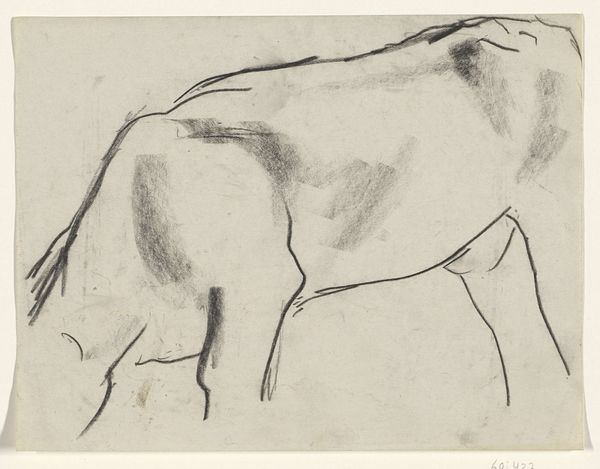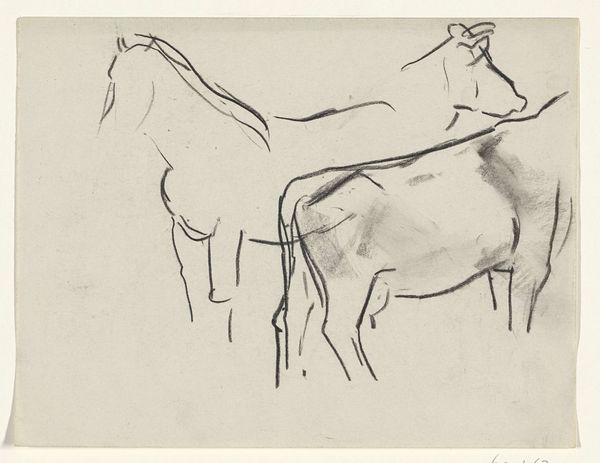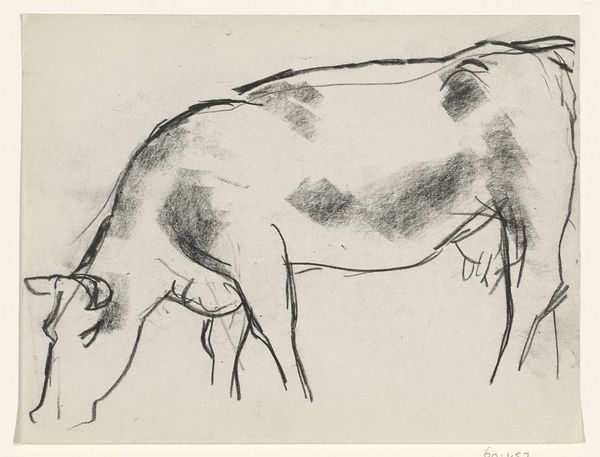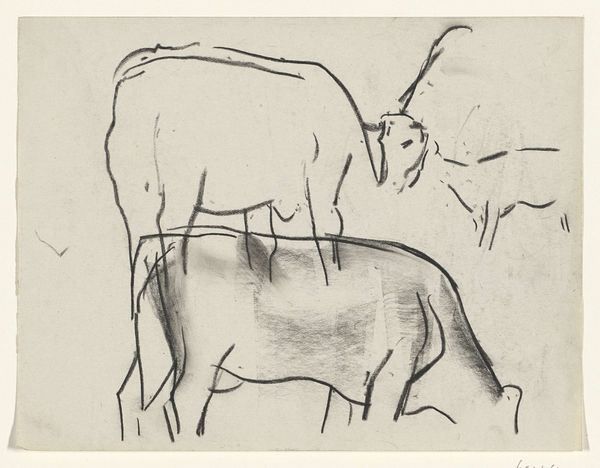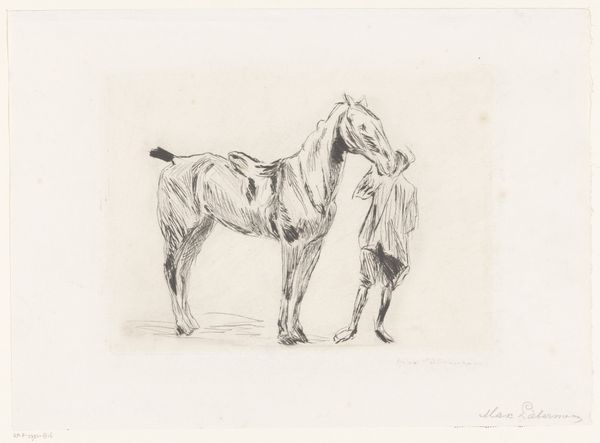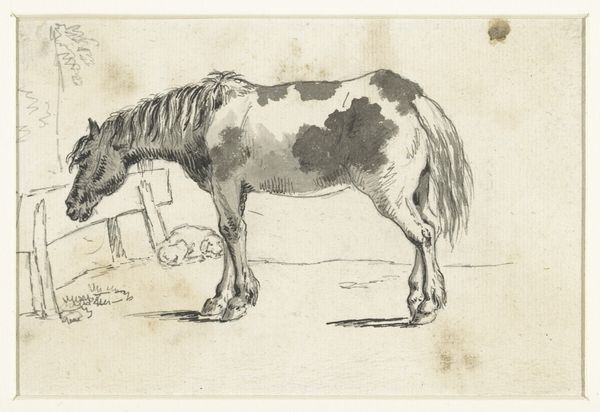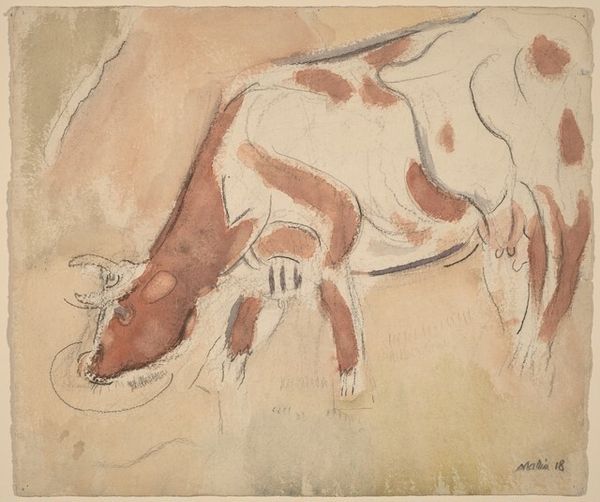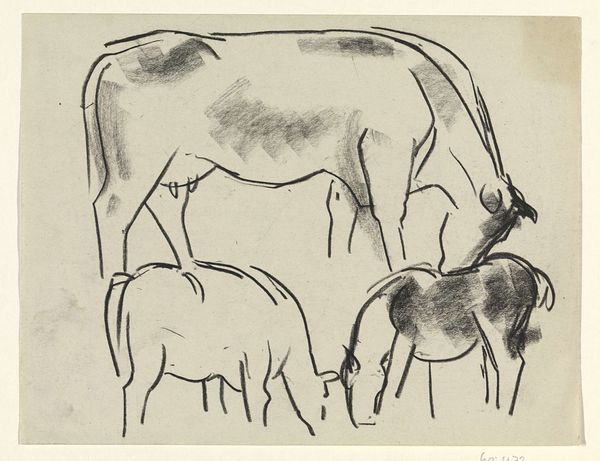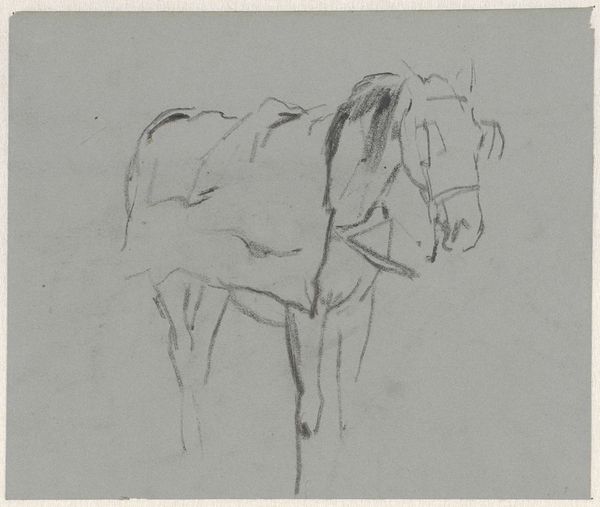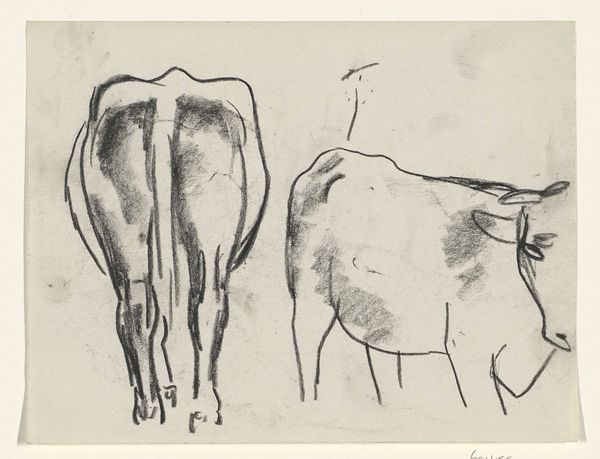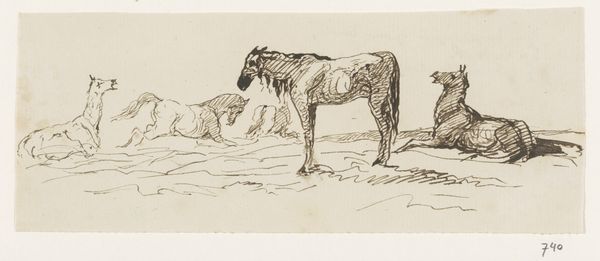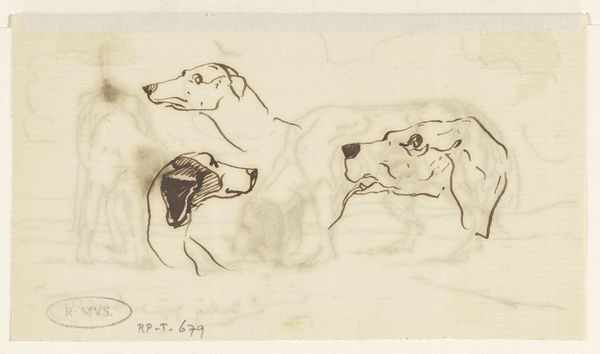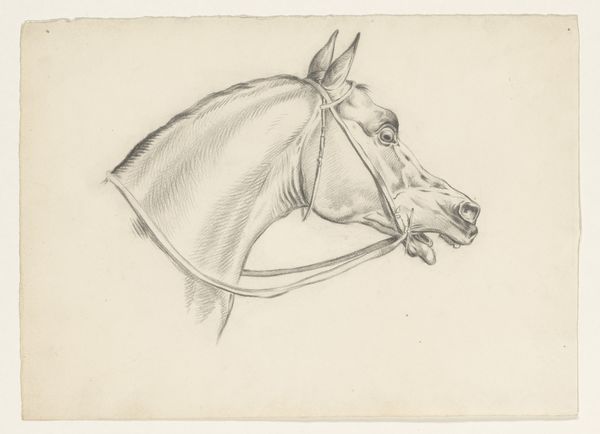
Dimensions: height 107 mm, width 152 mm
Copyright: Rijks Museum: Open Domain
Editor: Here we have Johannes Tavenraat's "Paard met zadel," or "Horse with Saddle," created sometime between 1840 and 1880. It’s an ink drawing. The sketch feels…incomplete, but there's a strange elegance in its simplicity. How do you interpret this work? Curator: It's interesting that you use the word 'incomplete'. I see this drawing, in its raw state, as revealing the power structures inherent in our relationships with animals. The horse, saddled and bridled, is poised for use, its autonomy curtailed. Consider the period – Romanticism and Realism converging – and think about what these movements said about human dominance. Editor: Human dominance over animals, sure, I see that. But what about its artistic merit? How does the drawing technique reinforce those themes? Curator: Look at the stark lines and minimal shading. The quick strokes might reflect the urgency of a society rapidly industrializing, demanding efficiency from both humans and animals. Is this just a simple portrait, or is it a subtle commentary on labor, control, and the subjugation of nature? Editor: So, you’re suggesting the drawing itself reflects a sort of… violence? A symbolic capture? Curator: Precisely! The artist’s choice of medium and technique contributes to this reading. Ink drawings often served as studies, preparations for larger works, maybe indicative of seeing animals only as tools? Editor: I never thought of it that way, seeing art as connected to, you know, animal rights or even labor practices. Curator: Art doesn’t exist in a vacuum. Considering the socio-political climate in which an artwork was produced helps us understand not only the artwork, but how it participates in broader cultural narratives. Editor: Definitely something to keep in mind when thinking about how we relate to each other and the world.
Comments
No comments
Be the first to comment and join the conversation on the ultimate creative platform.
